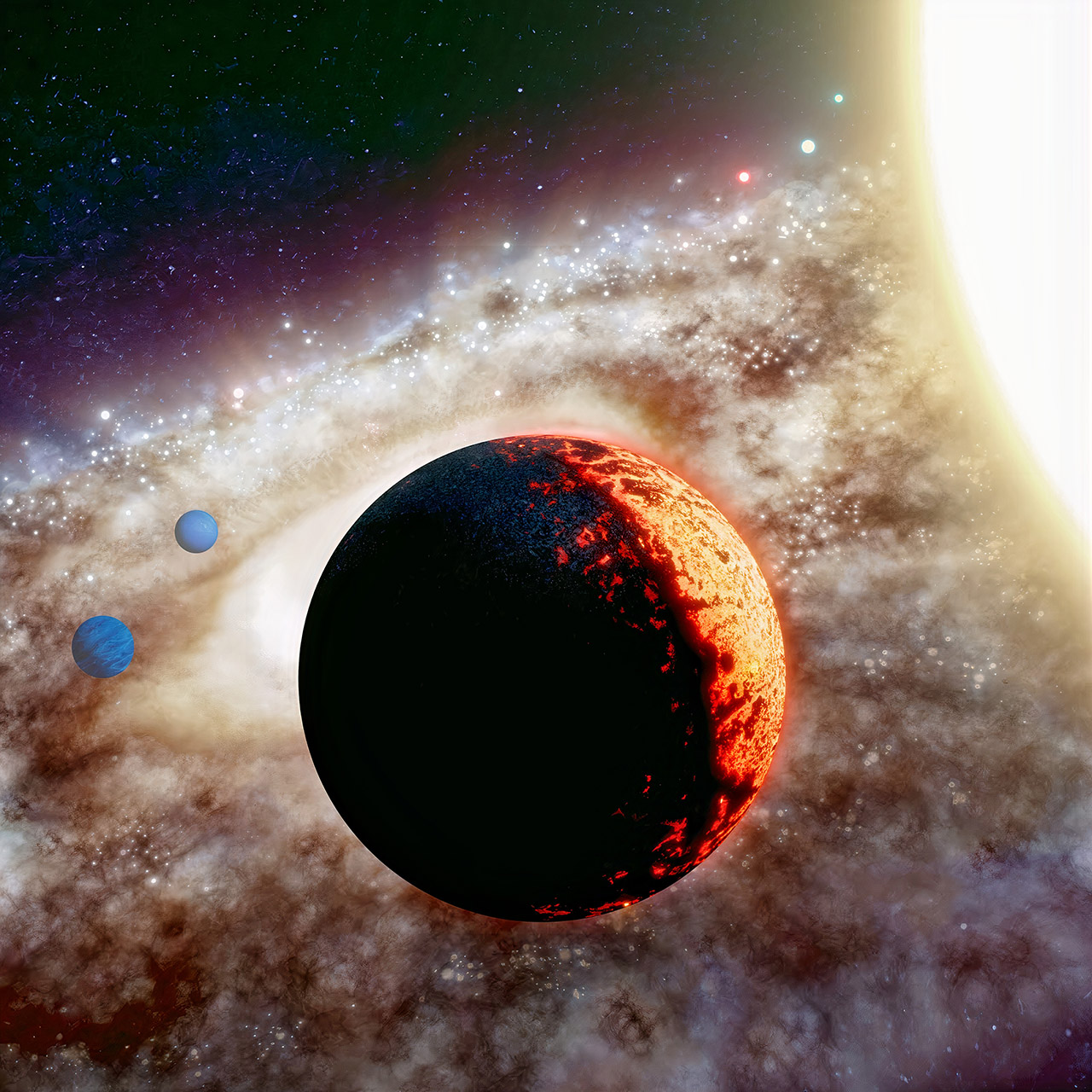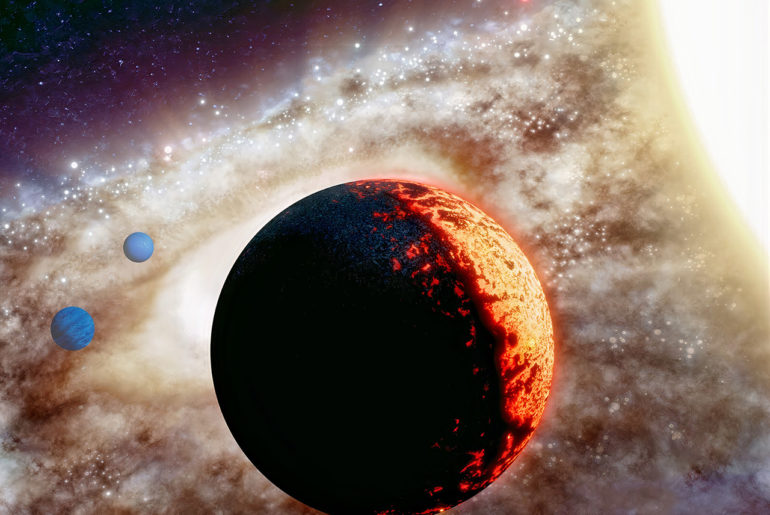
Virgin Orbit, a California-based satellite launch company, announced that its LauncherOne rocket has successfully reached space during its second launch demonstration today. This also confirms that it has successfully deployed 10 payloads for NASA’s Launch Services Program (LSP). Unlike other launch systems, Virgin Orbit uses a technique called air launch, in which a rocket is launched from under the wing of a jet aircraft, rather than from a traditional launch pad on the ground. Read more for two videos and additional information.

NASA’s Transiting Exoplanet Survey Satellite has discovered TOI 561-b, which orbits the TOI-561 star system. This planet is approximately 50% larger than Earth, but takes half the time to orbit its star due to its close proximity. What kind of life could survive there? Well, the kind that can survive an estimated average surface temperature of over 2,000 degrees Kelvin, but it might have been a different story in the past.

NASA successfully hot fired all four engines on the massive Space Launch System core stage for the Artemis I rocket that will travel to the moon at the end 2021, but they were cut after a minute into the planned eight-minute test. The original goal was to simulate the thrust the Space Launch System rocket’s core stage, which generates 1.6 million pounds burning through more than 700,000 gallons of liquid hydrogen and liquid oxygen. Read more for a video and additional information.

Blue Origin, a space exploration company owned by Amazon founder Jeff Bezos, launched its 14th sub-orbital flight of a New Shepard spacecraft Thursday, using its reusable rocket to boost an unmanned crew capsule to the edge of space This mission was to test accommodations, cockpit displays and other systems for upcoming crewed flights. Its hydrogen-fueled BE-3 rocket engine ignited with a burst of flame at 12:17 p.m. EST from Launch Site One at Blue Origin’s west Texas flight test facility. Read more for the launch video and additional information.

Scientists from the Finnish Meteorological Institute envision a permanent “megasatellite settlement” orbiting Ceres, which is a large asteroid and dwarf planet in the asteroid belt located between Mars and Jupiter. When completed, it could not only function as a human habitat, but as a base for further exploration of the cosmos. Materials would be sourced directly from Ceres itself from mining operations, while its abundance of nitrogen may eventually lead to the creation of an Earth-like atmosphere.

Photo credit: NASA
Mexico’s Popocatépetl volcano is one of the country’s most active volcanoes and has been erupting since January 2005, with low-intensity emissions of gas, steam, and ash daily. The Operational Land Imager (OLI) on Landsat 8 captured this amazing image of a plume rising from the volcano on January 2, 2021. A few days later, the Washington Volcanic Ash Advisory Center (VAAC) observed a volcanic ash plume that rose to 21,000 feet above the volcano. Read more for a video and additional information.

Elon Musk firmly believes in Carl Sagan’s vision that humans should eventually colonize another planet to avoid another major extinction event. To be more specific, Sagan once said that we “live in the middle of a shooting gallery with thousands of asteroids in our path that we haven’t even discovered yet. So, let’s be at least a two-planet species, as a backup plan.” Michio Kaku agrees with Musk’s plan of becoming a two-planet species. Read more for a video of the interview and additional information.

Valles Marineris is currently the largest known canyon in the Solar System and it cuts a wide swath across the face of Mars. This grand valley extends over 3,000 kilometers long, spans as much as 600 kilometers across, and delves as much as 8 kilometers deep. For comparison, the Grand Canyon in Arizona spans 800 kilometers long, 30 kilometers across, and 1.8 kilometers deep. It is unknown how Valles Marineris formed, although a leading hypothesis holds that it started as a crack billions of years ago as the planet cooled. Read more to see two new images captured by NASA’s HiRise camera and for additional information.

NASA closed out 2020 by showcasing the 20 best Earth images captured by astronauts aboard the International Space Station (ISS). They include many natural wonders, bustling cities, and even natural disasters, like wildfires as well as extreme weather events. In the image above, we see Cuba and the Bahamas taken with a Nikon D5 DSLR and a 16mm lens. Other amazing shots include the Great Lakes photographed during the snowy winter and Paris at night with its many lights. Read more for the video and additional information.

Elon Musk said that SpaceX, which has been making controlled landings of its Falcon 9 boosters, will attempt to catch the Super Heavy boosters with a launch tower arm instead. If successful, this will result in additional cost savings, while also reducing the weight of the rocket. How so? The booster will not need to be equipped with legs, thus allowing for it to be immediately repositioned onto the launch mount for reuse in under an hour. Read more for a video and additional information.


